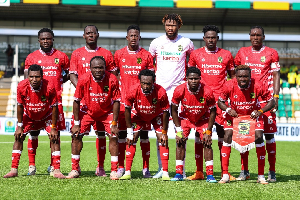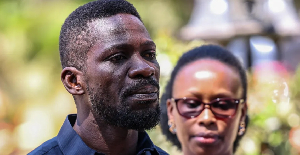The 16th November 2008 “poll” released by a so-called Policy & Strategy Associates Inc. purportedly of London, UK with results stating the NDC’s Prof. Mills was in the lead with 53.6% and Akufo-Addo 42.0% can only be charitably described as bogus.
The “poll” report does not reveal which constituencies were visited and the number of constituencies visited. As a puerile attempt to arrest its fraudulence, the report tells us: “It must be noted that this polling exercise is the third research exercise sponsored by young Ghanaian professionals who are independent, multi-partisan working associates of the Policy & Strategy Associates, Inc. in the Diaspora.” No contact details of this group are provided.
The following are just a few of the inaccuracies detected through preliminary analysis undertaken by DI.
1. NON-EXISTENCE OF COMPANY Policy and Research Associates Inc. is nowhere on the radar. A preliminary check made by the Danquah Institute has drawn a blank on the existence of ‘Policy & Strategy Associates Inc anywhere in the world. The publication says it is a UK-based firm. Though the legal concept of incorporation is common across the globe, the term Inc (meaning Incorporated) is never used in the UK to refer to any registered organisation. So, Policy & Strategy Associates Inc. cannot be a British firm as claimed by the publication planted on www.ghanaweb.com and www.myjoyonline.com. In the United States, corporations are identified by the term "incorporated" (Inc.), in Germany, GmbH, and for much of Europe and Latin America it is SA.
The organisation does not appear to exist (no website nor postal address is mentioned).
2. WRONG MARGIN OF ERROR Analysing the data, statisticians of DI were quick to dismiss the ‘survey’ as a “shameless exercise of creative armchair opinion sampling.” No specific sample size is mentioned. The publishers give a range of sample sizes from about 720-765 per region. A ±4% margin of error, taking account of a minimum sample size of 7,000 to 7,200 or a maximum of 7,650 is woefully incorrect and insulting to the principles of sampling.
The margin of error is a statistic expressing the amount of random sampling error in a survey's results. The larger the margin of error, the less faith one should have that the poll's reported results are close to reality; that is, the figures for the whole population.
The margin of error is calculated from this formula: 0.98 = M.E ?n Where n = 7,000, 7,200 or 7,650 (Sample Size)
The margin of error calculated with 7,000, 7,200 or 7,650 will give you a margin of error of ± 1.17%, ± 1.15% and ± 1.12% respectively which is totally way off ±4% stated by the supposed pollsters
3. EQUAL WEIGHTING Equal weighting of respondents across the ten regions of Ghana is highly unscientific (at least 700 respondents per region as it is supposed in this case). When you assign the statistical figures in percentages and count Upper West percentile equal to Ashanti Region, you are going to make kind of error that could be generously described as “Opinion Poll Rigging.” The authors are guilty of statistical illiteracy. It is mathematically lazy and disingenuous to equate the various regions when they have vast and varied sizes in number of registered voters. Perhaps their calculation was premised on the fact that each of the regions has one regional minister, rather than the fact that the number of districts, constituencies and registered voters differ from region to region.
4. INFORMAL INTERVIEWS AND SCIENTIFIC POLLING (CONTRADICTION) “Informal” and “scientific polling” as said to have been conducted by the supposed pollsters is highly contradictory. Informal interviews allude to the fact that there’s no structured questionnaire. It is like having a drink in a beer bar and taking the advantage to talk about politics.
5. SELECTION OF SAMPLE SIZE PER REGION What is the basis for selecting at least 700 respondents per region? Which constituencies in each region were selected? What informed the selection of constituencies? Do you pick only perceived NDC strongholds leaving out NPP, PNC or CPP strongholds?
6. What was the sampling method and how did they arrive at the sample size of 720-765 per region? What was the basis of deciding on this sample size?
The piece carries the authorship of a Prince Kassim, Associate & Report Editor, Policy & Strategy Associates, Inc Email: policystrategy@consultant.com. We would advise Ghanaians to go on the web and fine out a bit more about Consultant.com.
We would also hope that the websites that published the “polls” have direct contact details to Prince and would allow Ghanaians the benefit of probing.
Ghanaians have to be mindful of ghost pollsters. The temptation of creating a false impression that you are winning may be too much for some politicians to resist.
Asare Otchere-Darko Executive Director, Danquah Institute
Opinions of Tuesday, 18 November 2008
Columnist: Otchere-Darko, Asare














